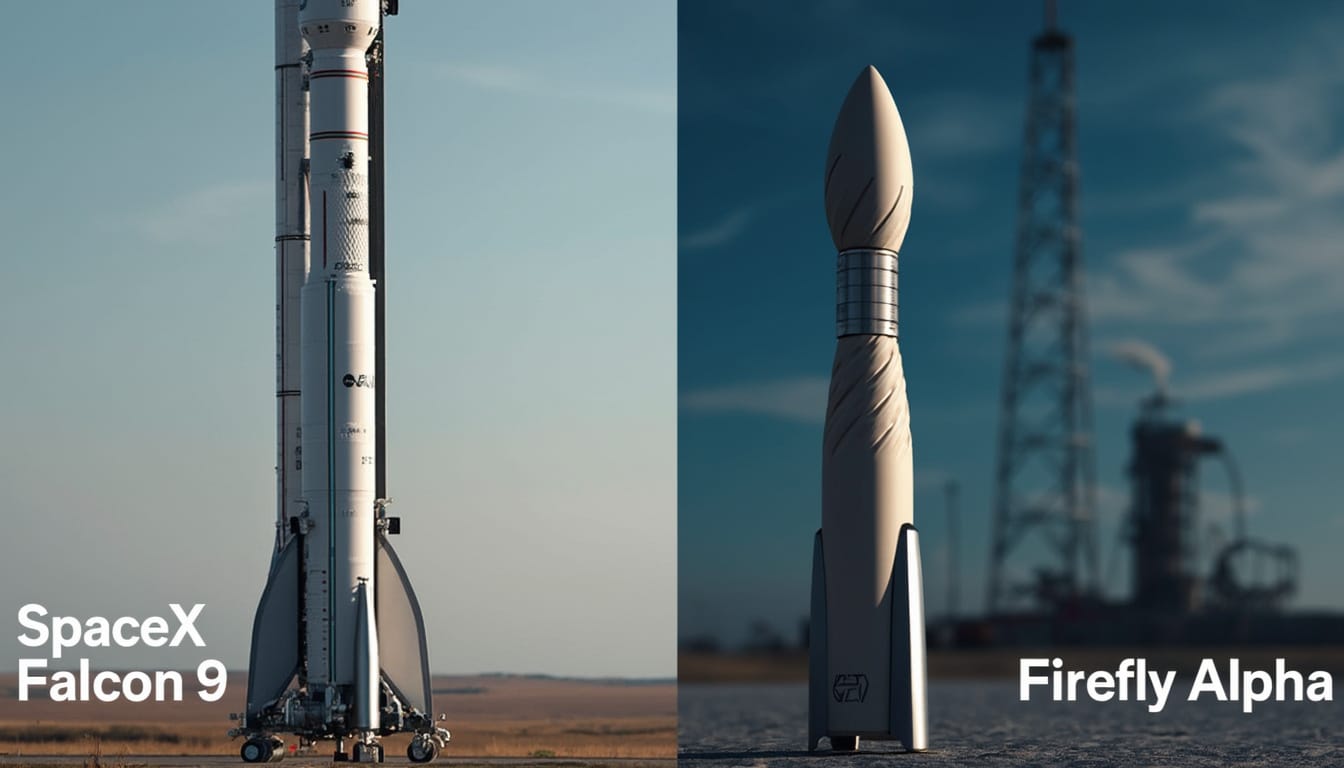The landscape of private space exploration is evolving rapidly, marked by a surge in innovation and competition. At the forefront of this new era is Captain Kirk Konert from AE Industrial, who has been instrumental in fostering growth in this dynamic sector. With a keen focus on the trajectory of companies like Firefly Aerospace, which has made headlines for being the first private entity to successfully land on the moon, Konert sheds light on how the evolving market is creating new opportunities and challenges. In this discussion, he highlights the competitive edge of Firefly over industry giants like SpaceX, Blue Origin, and others, paving the way for a more collaborative and profitable future in space.
Kirk Konert: A Pioneer in Private Equity for Space
As a Managing Partner at AE Industrial, Kirk Konert has been a key player in the space investment arena. Serving on the boards of various companies, including Firefly Aerospace, which has achieved remarkable milestones in lunar exploration, Konert is steering the ship in a sector that is attracting attention from major investors. Firefly Aerospace’s recent success with the Blue Ghost lunar lander signifies not just a technological achievement but also a shift in the business dynamics of space exploration.

Firefly’s Stellar Achievement
In March, the Blue Ghost successfully completed its mission on the moon, making Firefly Aerospace the first commercial company to land a spacecraft on this celestial body. This incredible feat occurred ahead of competitors like SpaceX, highlighting the potential within the private sector to achieve groundbreaking exploration initiatives. Konert describes witnessing this event as a surreal experience—a moment of pride not only for Firefly but also for AE Industrial, affirming their strategic investment decisions. In today’s competitive climate, where companies like SpaceX, Blue Origin, and Virgin Galactic dominate headlines, Firefly’s achievement serves as a strong reminder that innovation and strategic investments can yield significant breakthroughs.
The implications of Firefly’s achievements extend beyond mere publicity; they signal a clear indicator of how private capital is reshaping the aerospace industry. Where established players like Boeing, Lockheed Martin, and Northrop Grumman have long been somewhat insulated from competition, the emergence of agile companies like Firefly illustrates how privatization is democratizing access to space.
The New Era of Space Privatization
The conversation surrounding space exploration has transitioned significantly in recent years. According to Konert, the current climate signifies a real “era of space privatization.” High-profile acquisitions and investments have set the tone for an encouraging market where private equity firms are increasingly willing to invest in space ventures. Notable examples include significant buyouts like Advent International’s $6.4 billion acquisition of Maxar Technologies, demonstrating that institutional investors are recognizing the potential within the aerospace domain.
The Changing Perception of Investment Risks
Initially, limited partners (LPs) in investment firms expressed skepticism about space projects, regarding them as riskier than typical buyout investments. Konert emphasizes that this perspective is evolving. AE Industrial has demonstrated through its portfolio that investments in space are backed by real demand. The companies they engage with possess tangible contracts and are showing substantial growth trajectories comparable to traditional markets. By showcasing successful case studies, including their profitable exit from American Pacific Corporation, which was sold for $700 million, Konert can effectively counter concerns about risk and uncertainty in the space sector.
The Competitive Landscape: Firefly vs. SpaceX
In a fiercely competitive landscape where SpaceX tends to dominate conversations, it’s crucial to recognize that other players like Firefly have specific niches within the market. Konert points out that while SpaceX excels in certain areas, Firefly focuses on missions that serve distinct needs. This niche strategy allows for co-existence rather than direct competition—a philosophy that fosters growth across the industry rather than a zero-sum mentality where one company must lose for another to win. He notes that competition itself enhances innovation, driving all players to perform better.

Strategic Collaborations and Future Missions
Long-term partnerships and contracts are key to survival and success in the private space competitive landscape. Just recently, Firefly secured a U.S. Defense Department contract for an on-orbit mission scheduled for 2027. These types of contracts not only ensure revenue but also validate the company’s credibility in the sector. As the U.S. government ramps up its investment in space, opportunities for companies like Firefly to carve out market share are on the rise.
Moreover, ongoing developments in the broader technology sphere, such as drones and artificial intelligence, complement advancements in space exploration. For instance, AE Industrial’s recent acquisition of a drone company by its portfolio company, Redwire, illustrates the synergistic benefits of having diverse expertise within a single investment firm. This convergence offers a robust approach to addressing different market demands, enhancing competitive positioning.
Propelling Forward: The Future of Private Space Exploration
The future of space exploration is brimming with possibilities as innovations continue to unfold. Companies are exploring synergies between different technologies, using advancements in fields like AI to solve complex challenges in space travel and exploration. The integration of AI models into aerospace projects is redefining traditional methodologies, and as Konert suggests, those who fail to include an AI strategy risk falling behind.
Investing in Tomorrow’s Innovations
The increasing collaborative efforts among companies are paving the way for continuous improvement and breakthroughs in the sector. As more investments flow into space-related technologies, the potential for innovations that will transform exploration grows exponentially. Leaders like Konert see the trajectory pointing toward a more integrated approach, encompassing investments not just in launch vehicles but also in supporting technologies that make missions feasible.
The participation of larger private equity firms alongside mid-market firms like AE Industrial creates a diversified ecosystem that can weather market volatility and innovation risks. The ongoing competition produces healthy dynamics that enhance the entire sector, fostering an environment ripe for growth. As the space economy continues its expansion, there’s a collective focus shifting toward how to leverage existing innovations while also making strategic advancements.
| Company | Notable Achievement | Market Position |
|---|---|---|
| Firefly Aerospace | First private company to land on the moon | Growing presence in commercial space |
| SpaceX | Revolutionized space launches with Falcon 9 | Market leader in satellite launches |
| Blue Origin | Focus on suborbital tourism | Emerging competitor in the market |
| Virgin Galactic | Pioneering space tourism | First in commercial space tourism |
| Rocket Lab | Leading small satellite launches | Niche player in small satellite sector |
The vibrant future of space exploration is being crafted today through innovative strategies, partnerships, and advancements in technology. During this pivotal moment, investments and performance can determine not just the success of individual companies but the overall trajectory of the space economy.




Leave a Reply